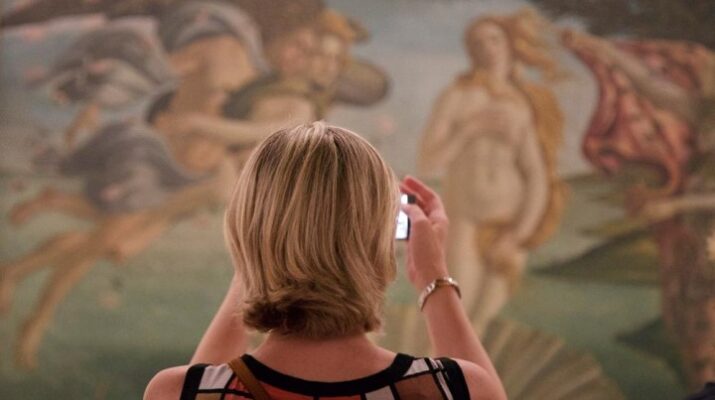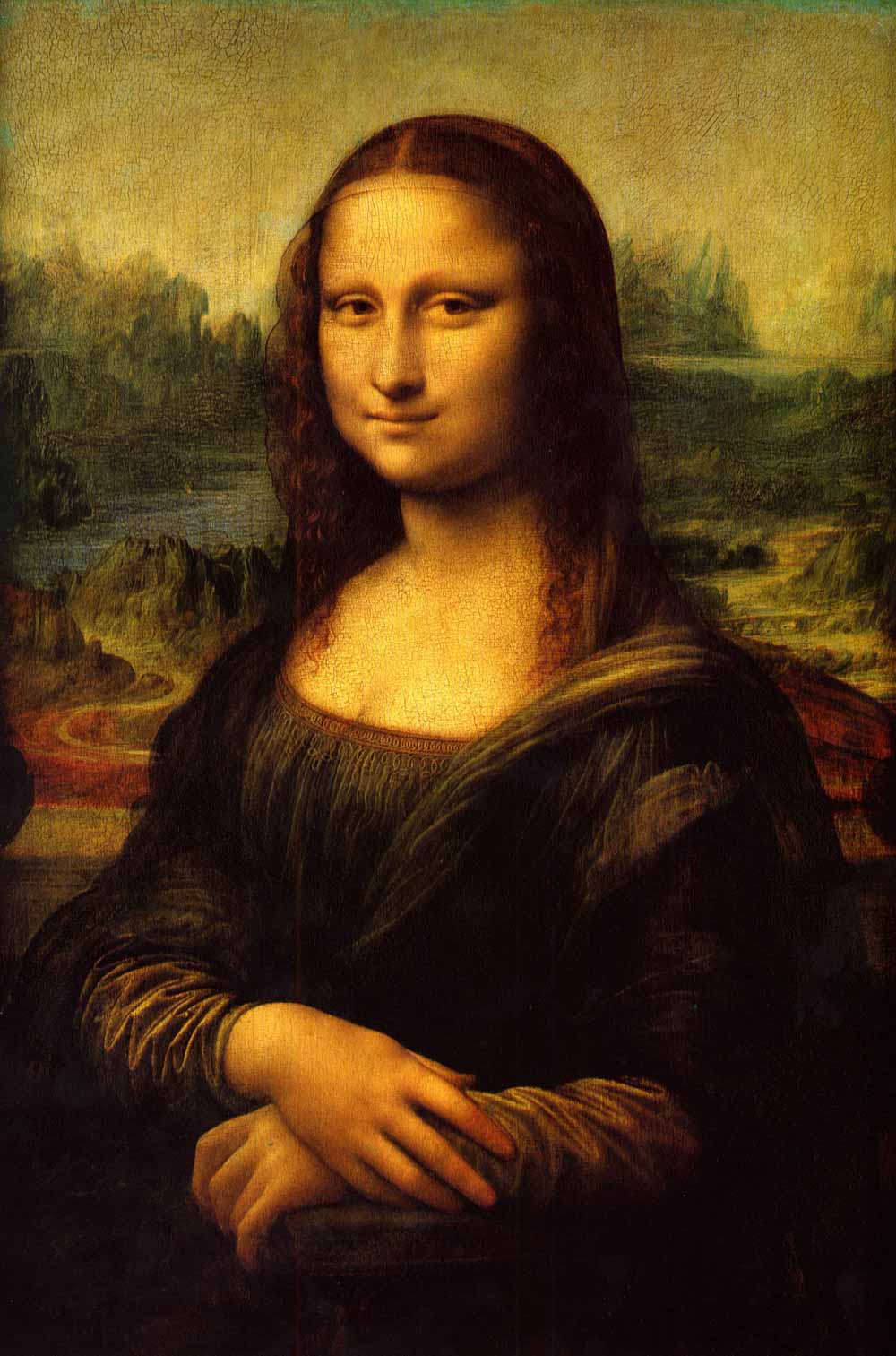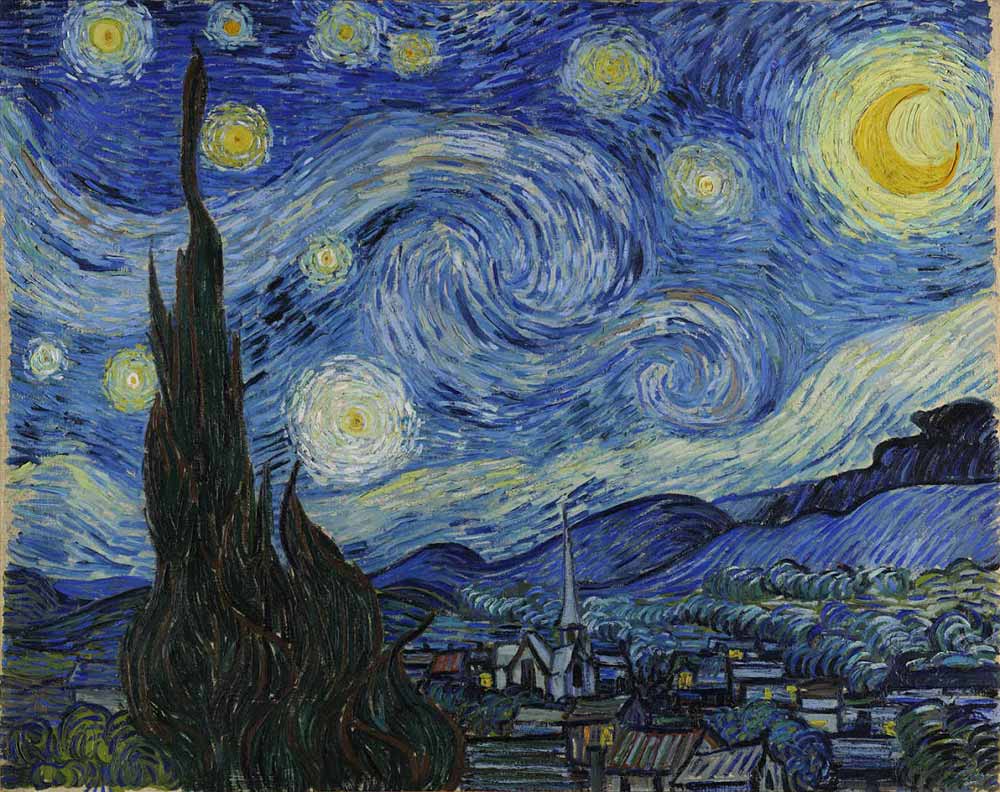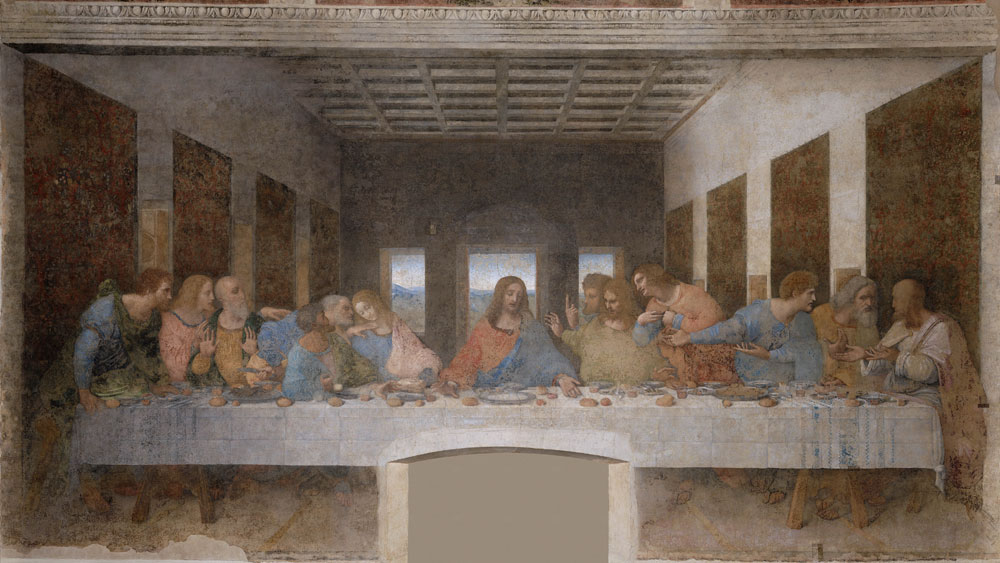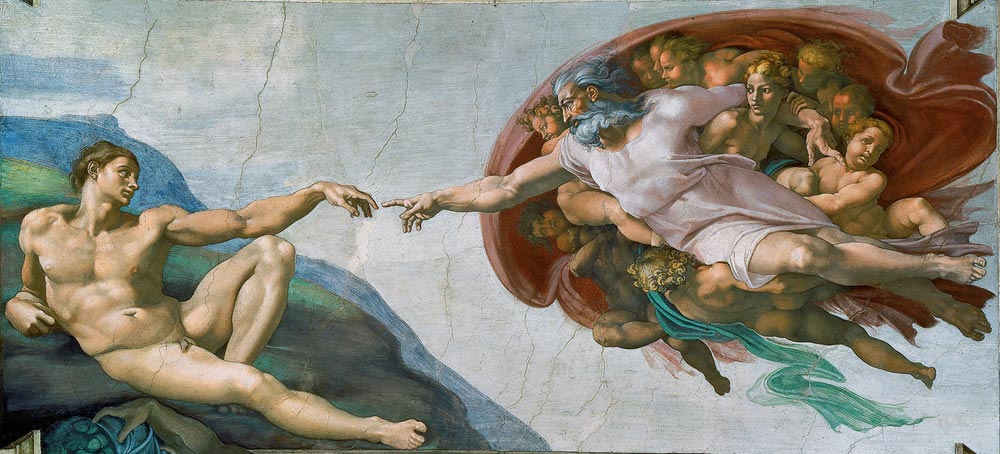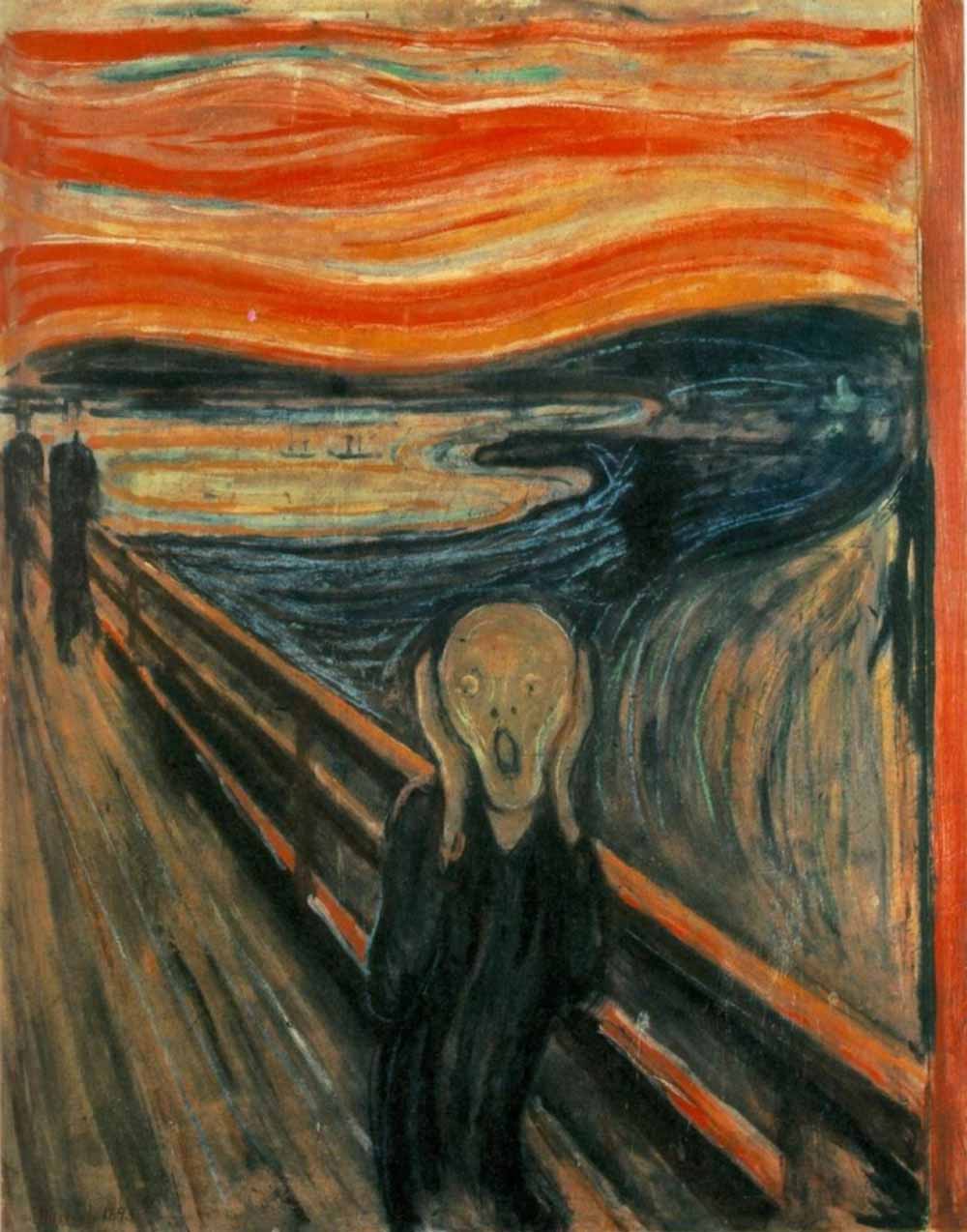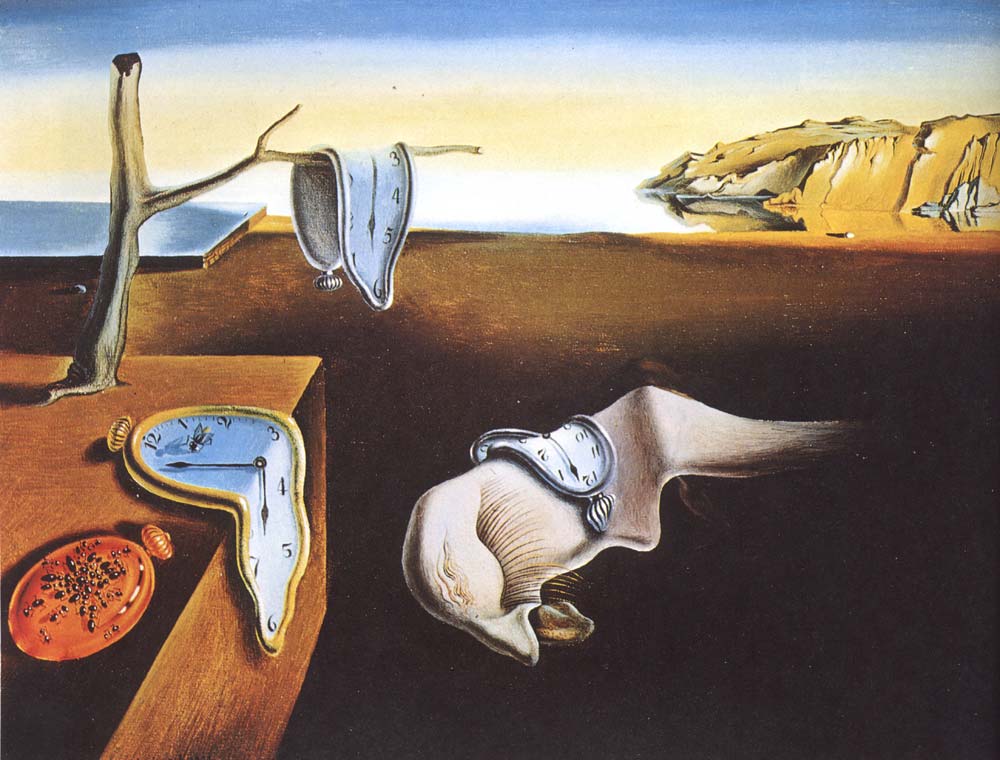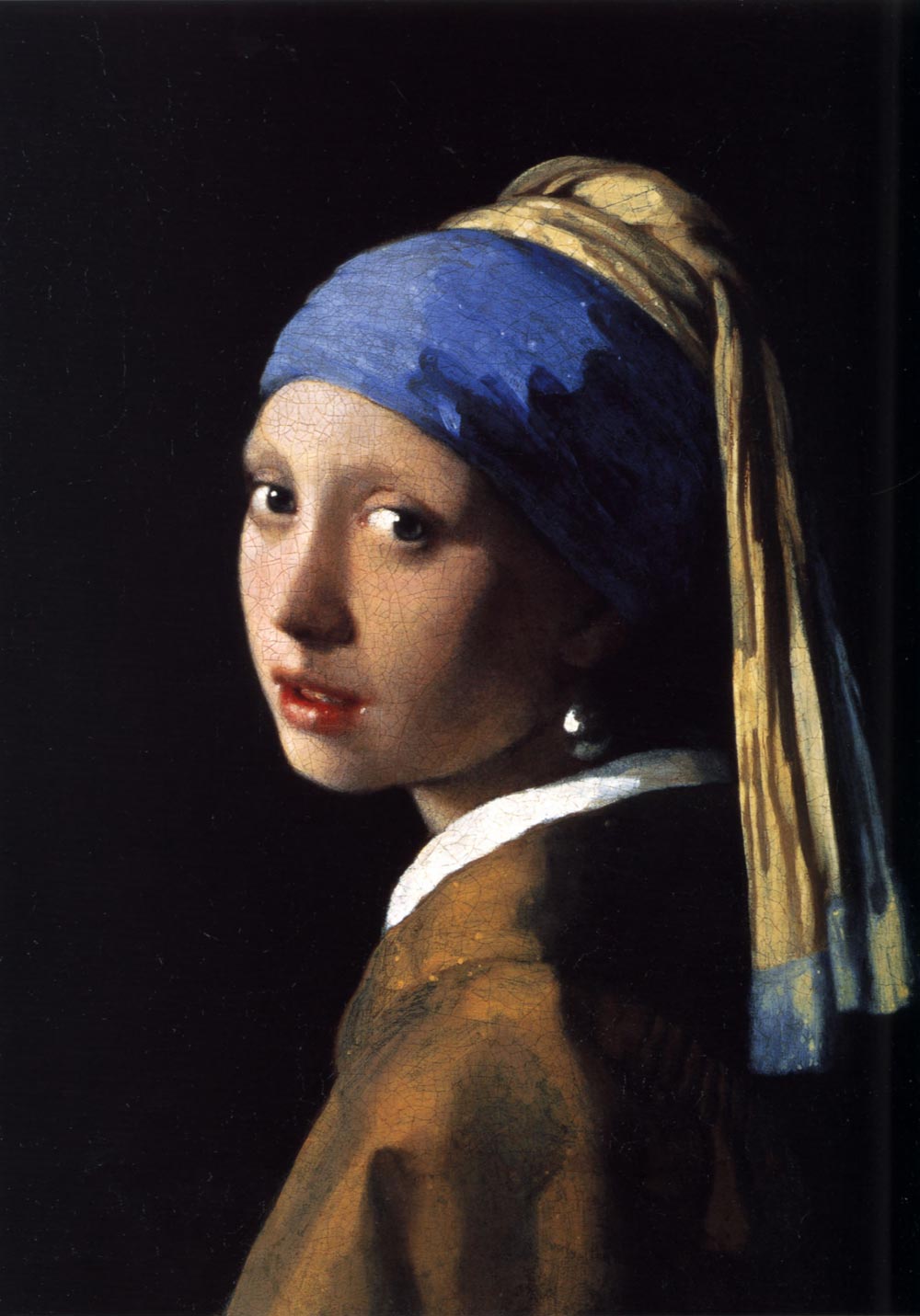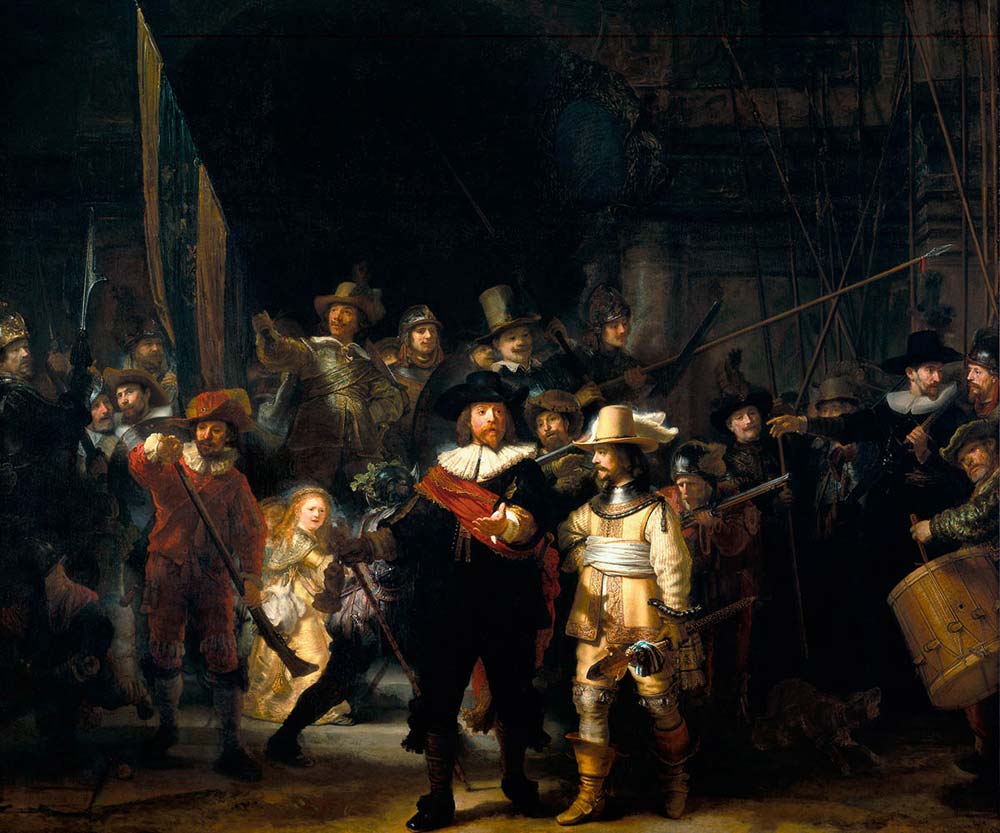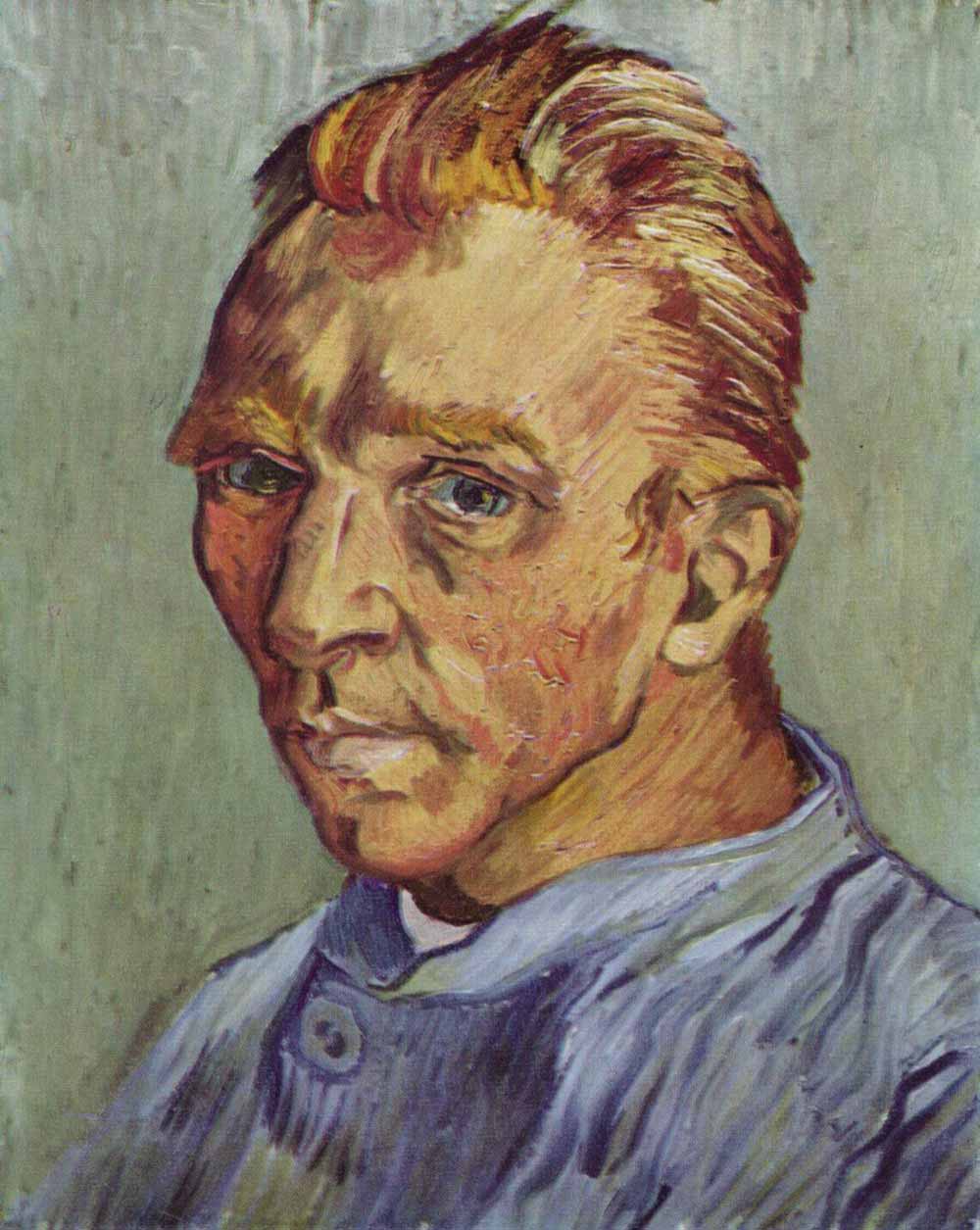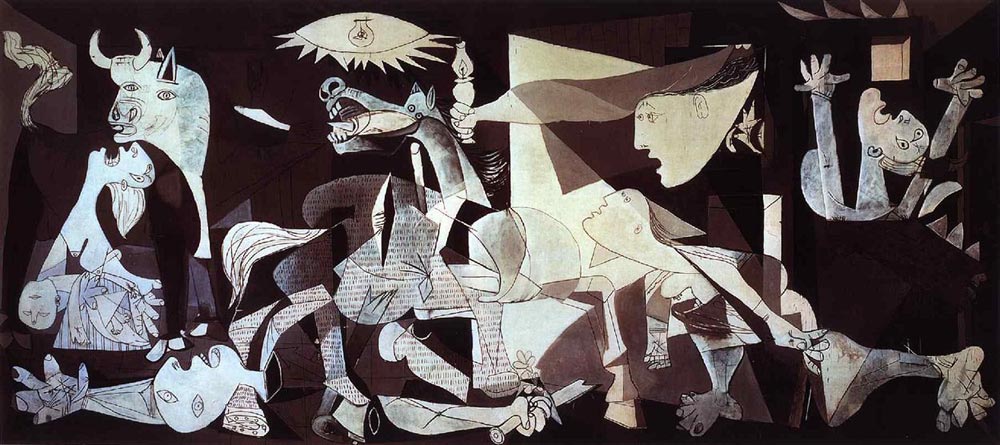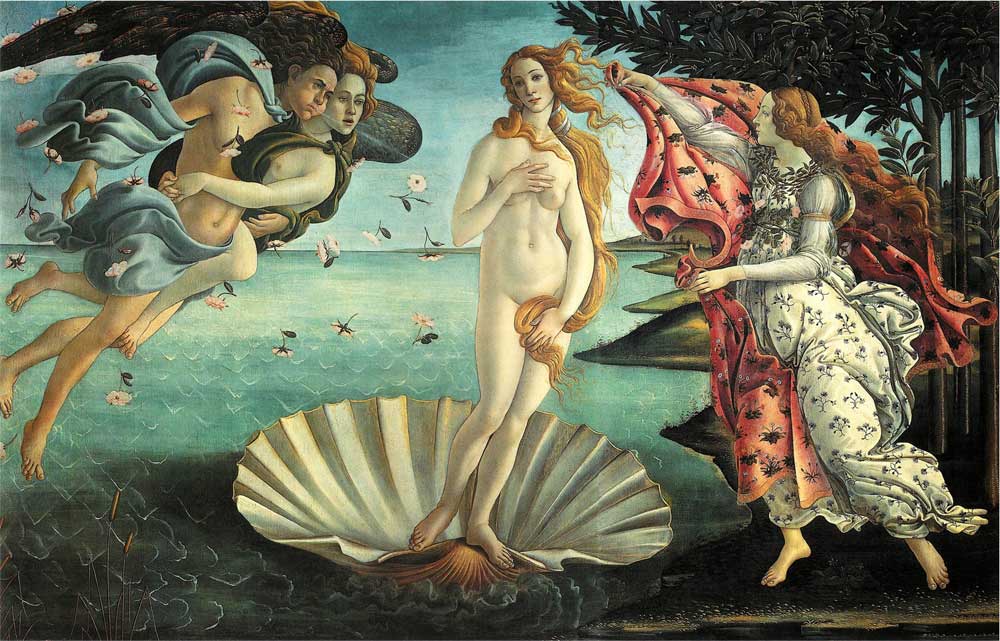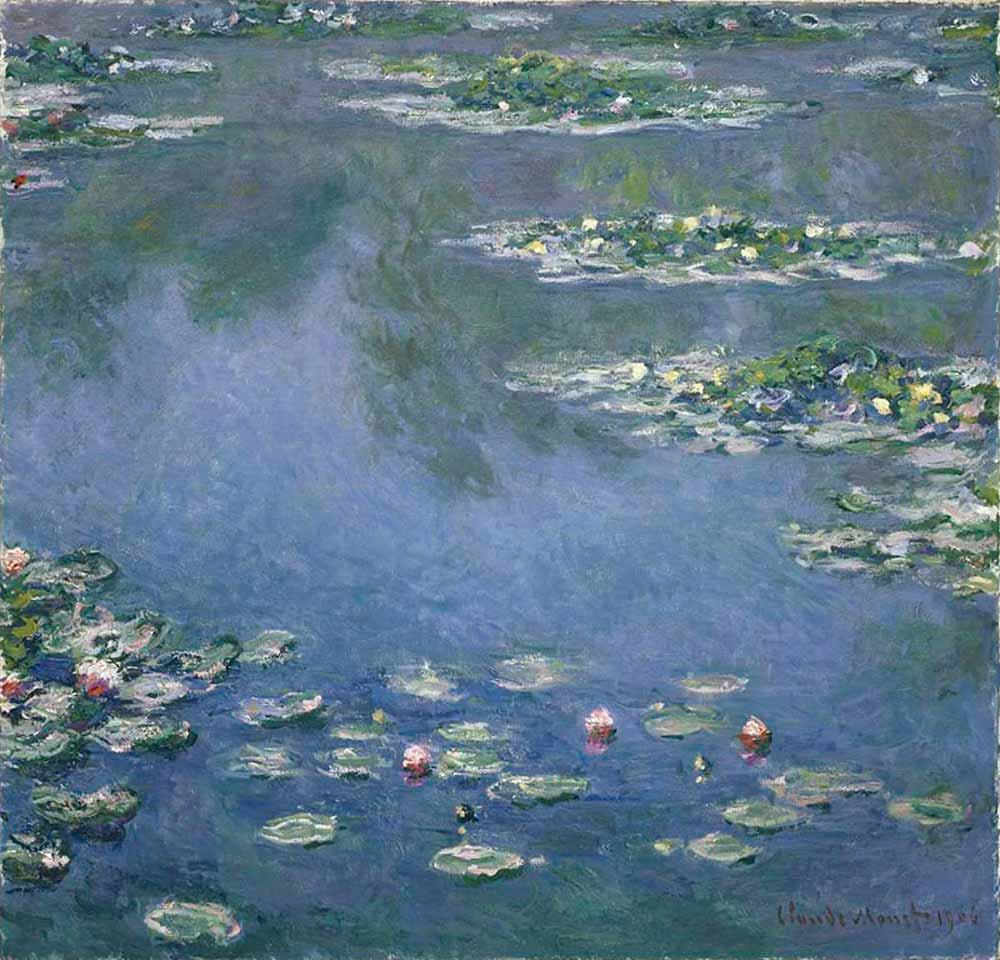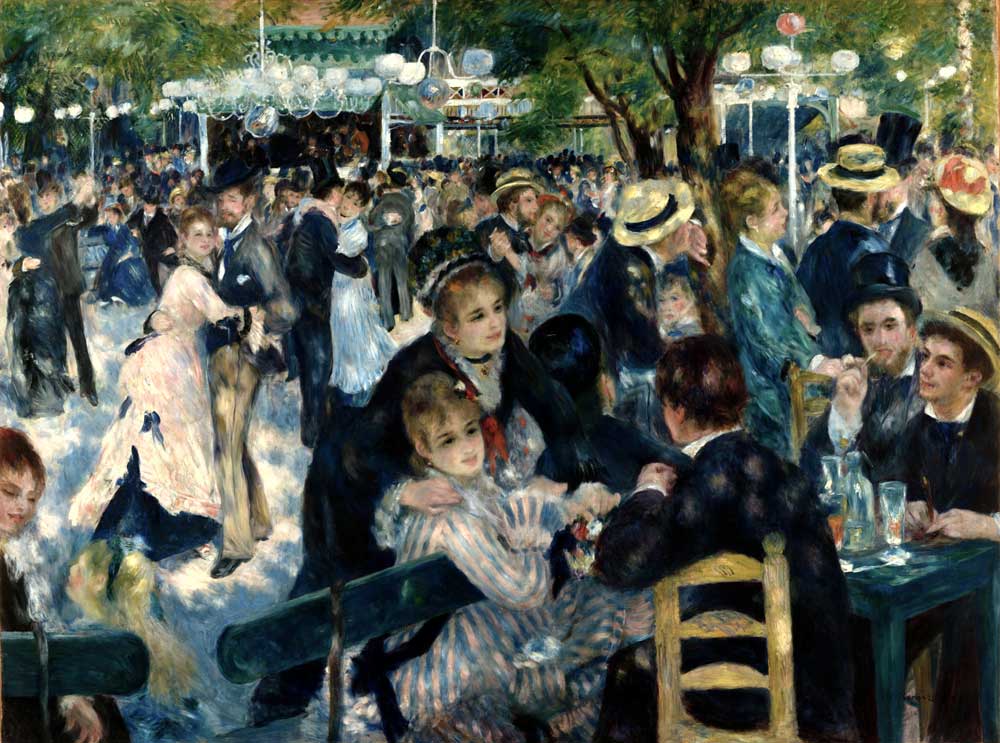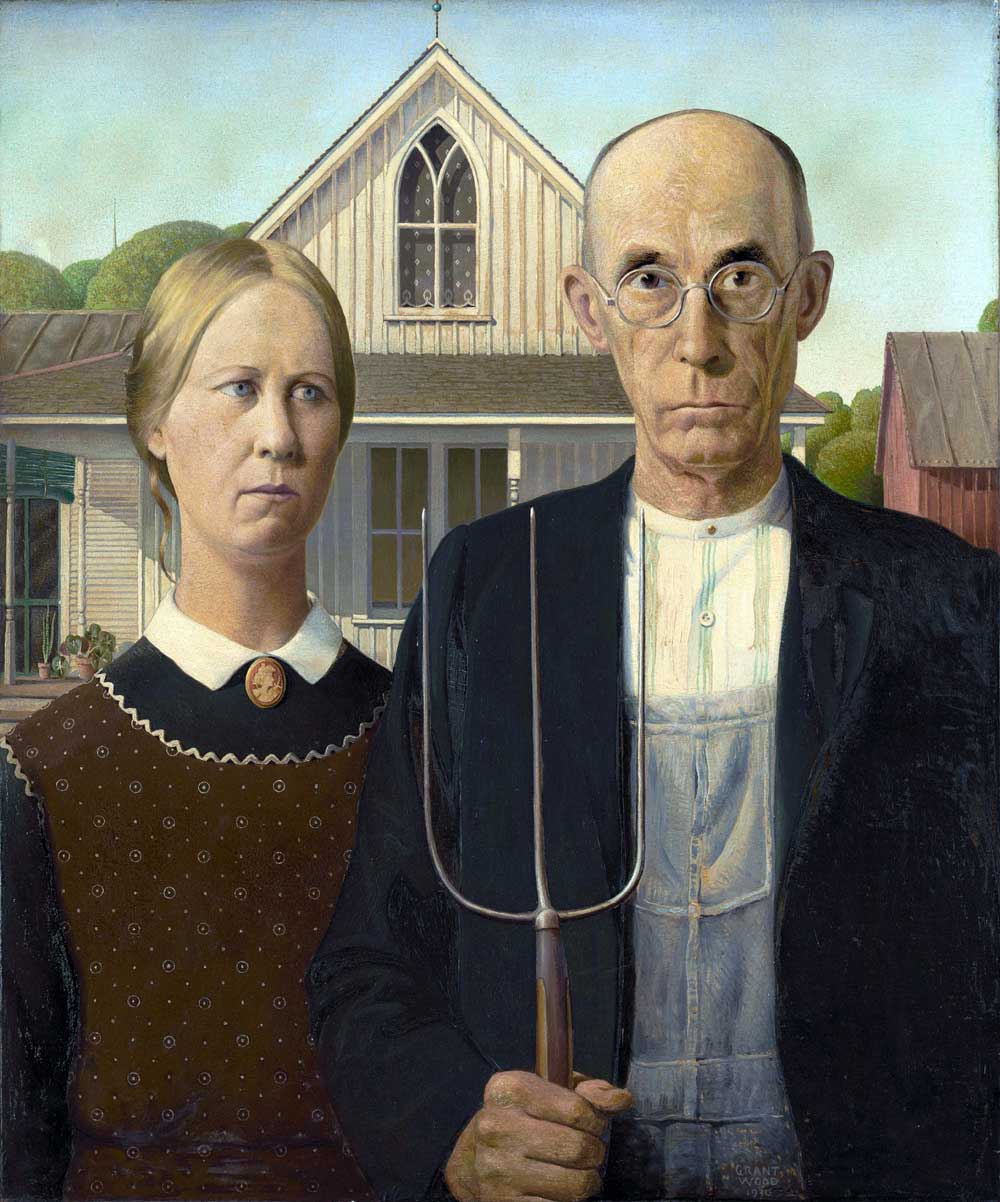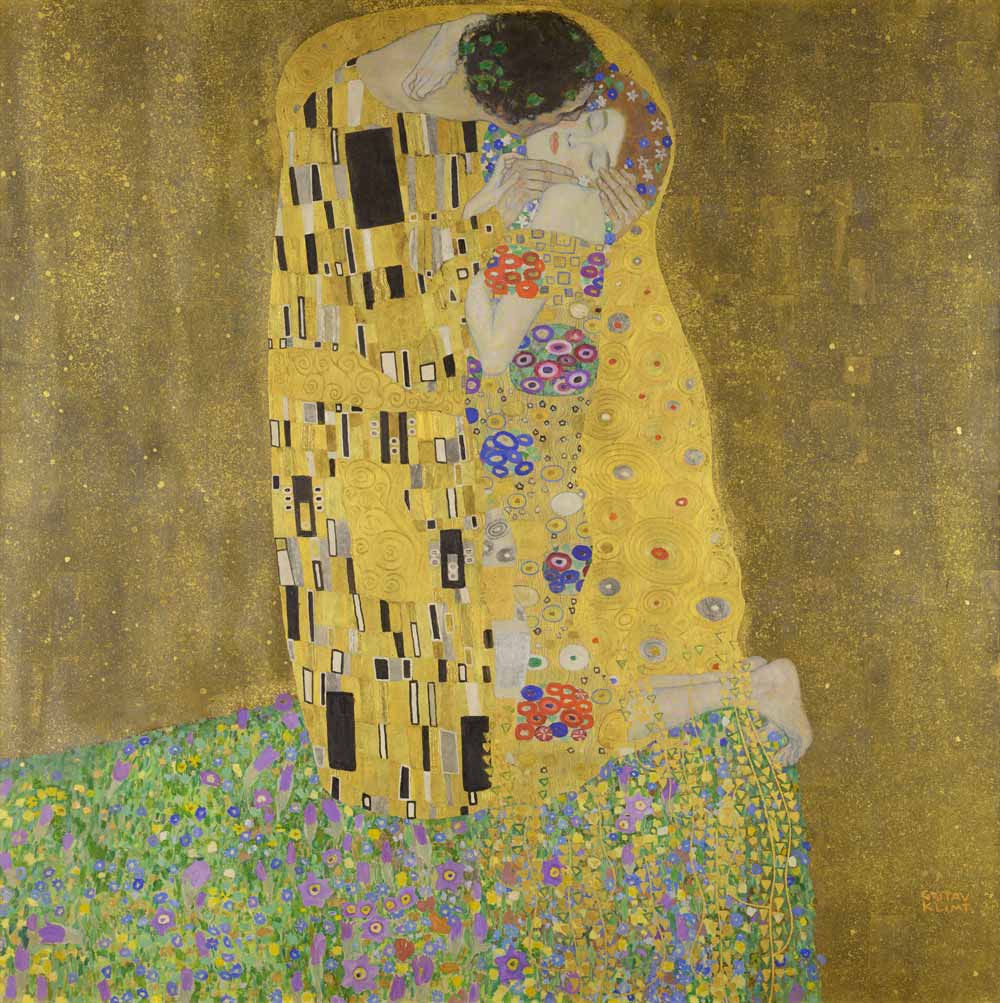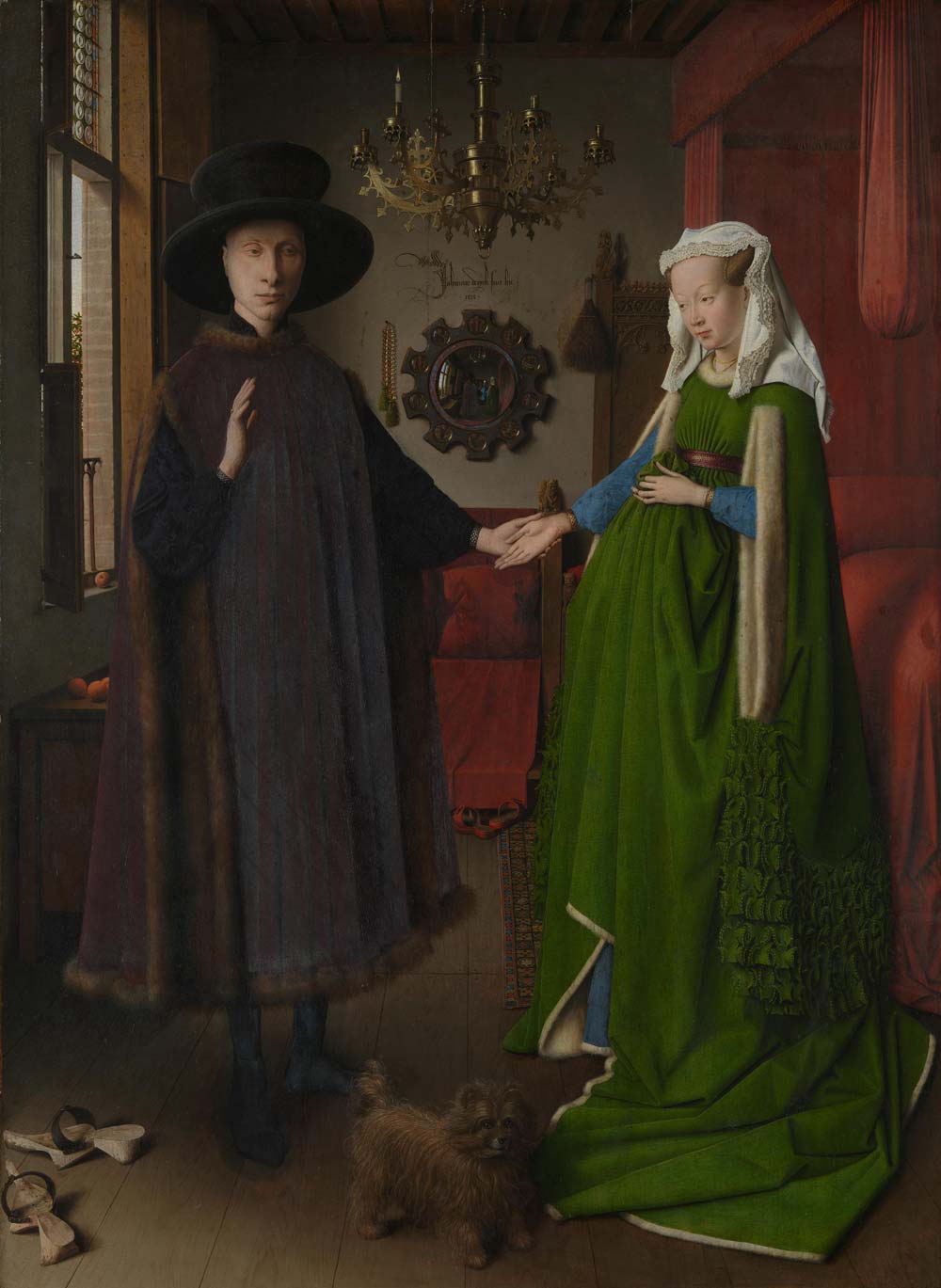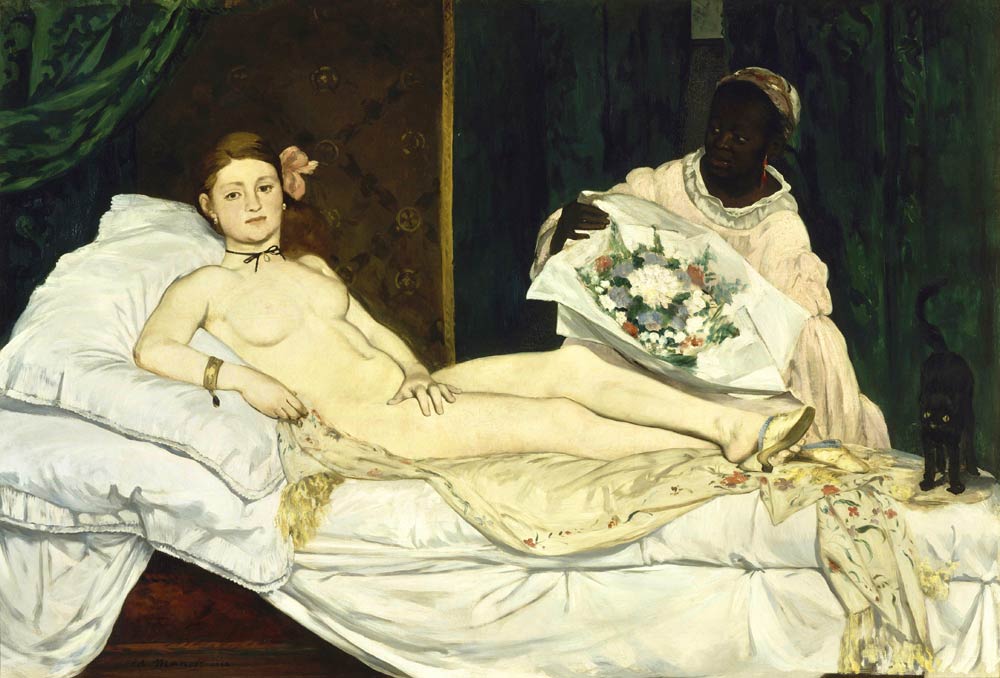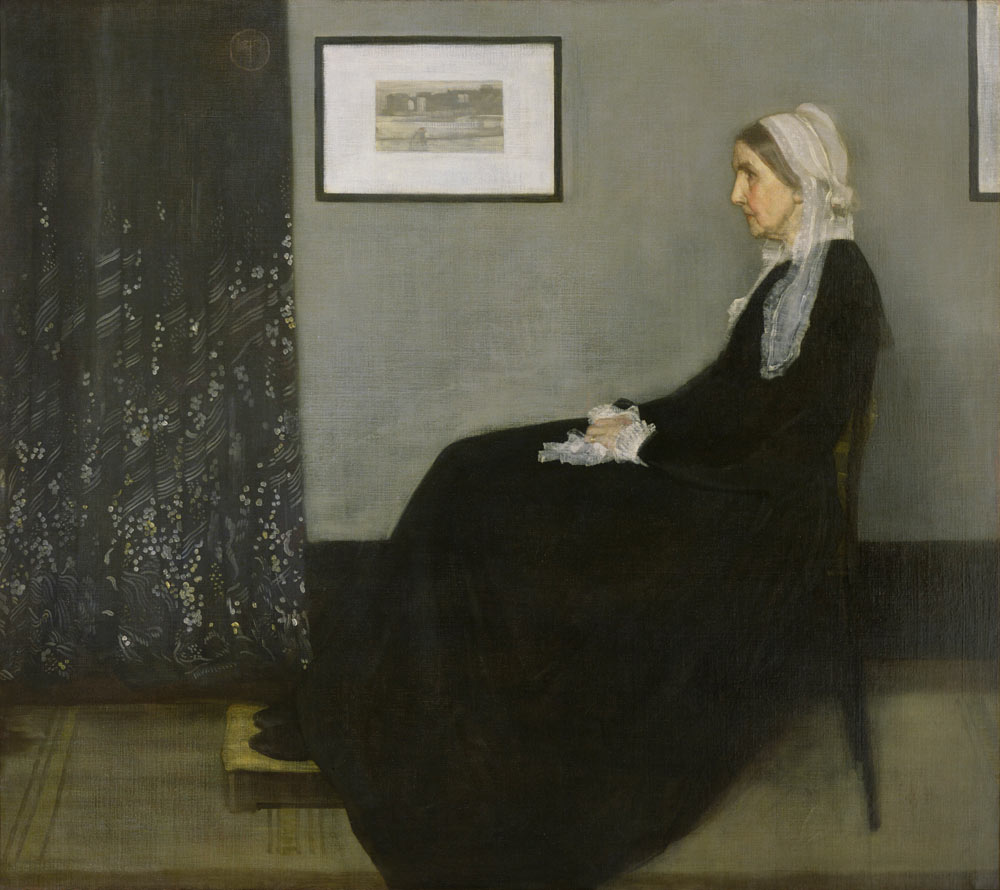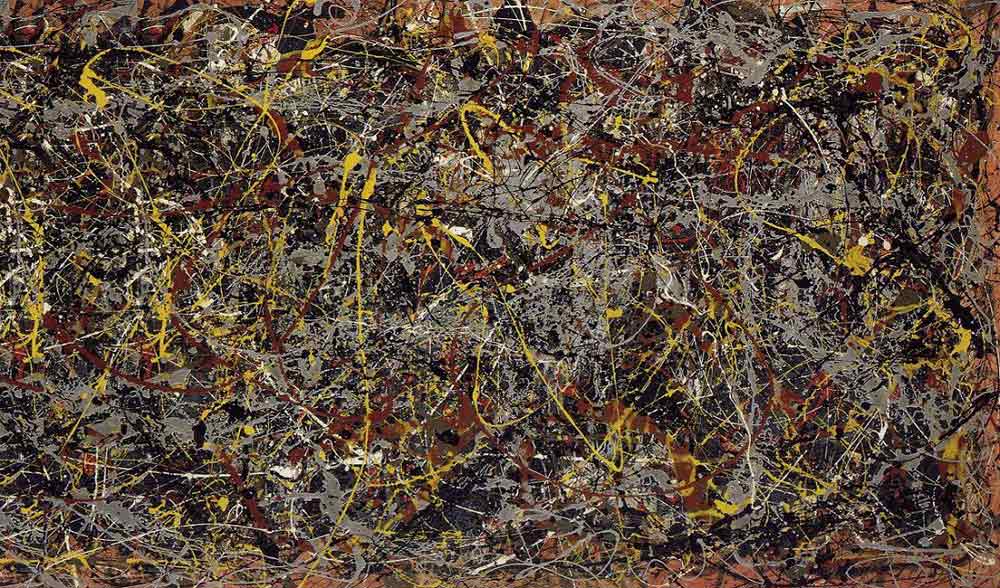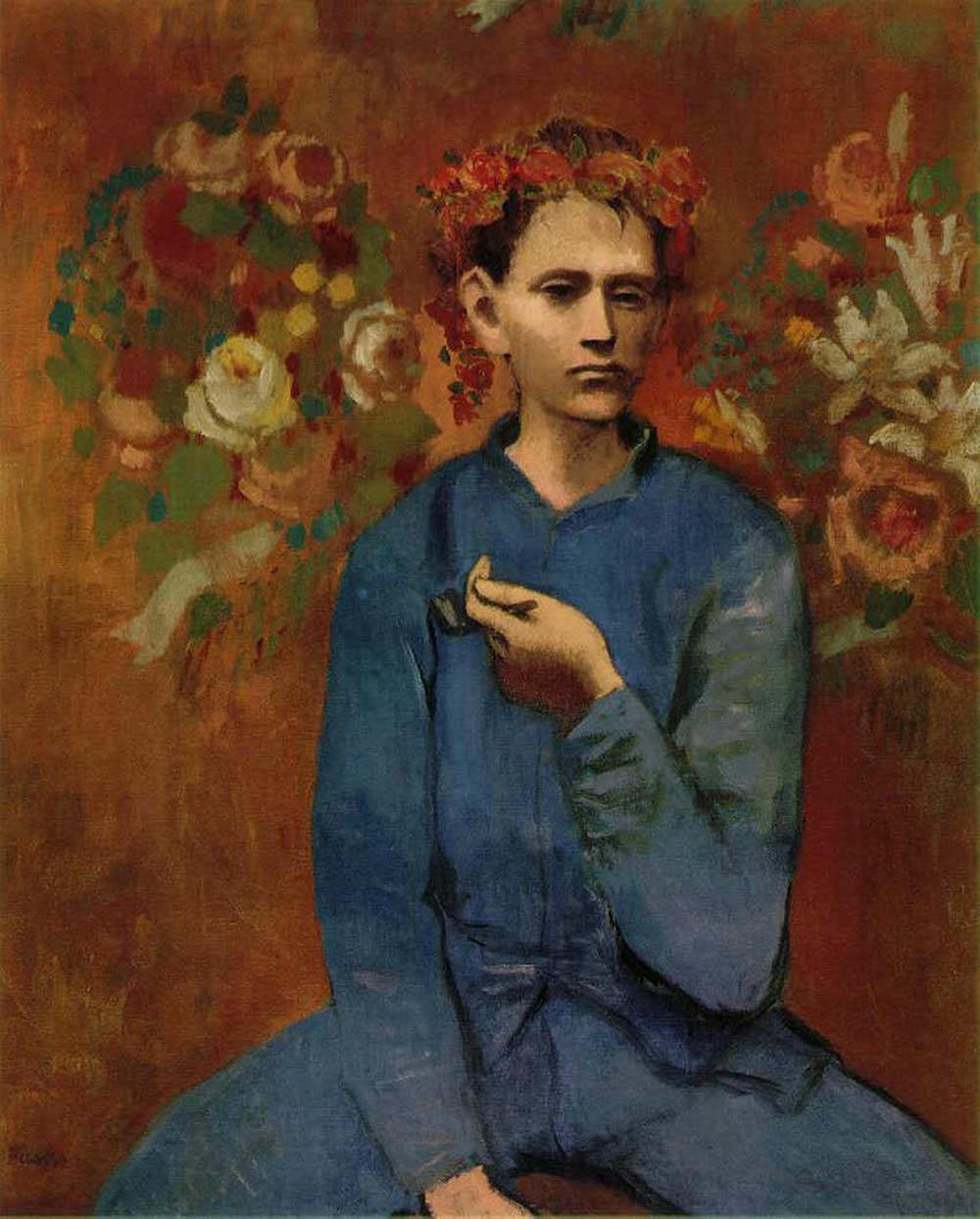And here are 20 of the world’s best, most beautiful, and most famous paintings of all time.
1. Mona Lisa
| Artist | Leonardo da Vinci, Italian |
| Year | 1503-1506 perhaps continuing until 1517 |
| Medium | Oil on poplar panel |
| Dimensions | 77 x 53 cm |
| Location | Louvre Museum, Paris |
The Mona Lisa is the most famous painting in the world. It was painted by Leonardo da Vinci during the Renaissance in Florence, Italy. He began painting the Mona Lisa in 1503 or 1504 and completed it shortly before his death in 1519. The painting was named after Lisa del Giocondo, who was a member of a wealthy family of Florence. In 1911 the Mona Lisa was stolen from the Louvre Museum by an employee named Vincenzo Peruggia, an Italian patriot who believed that the Mona Lisa should return to Italy. After keeping the painting in his apartment for two years, Peruggia was finally caught when he tried to sell the painting to the directors of the Uffizi Gallery in Florence. Today the Mona Lisa is on display again at the Louvre Museum in Paris where 6 million people flock to see this masterpiece each year.
2. Starry Night
| Artist | Vincent van Gogh, Dutch |
| Year | 1889 |
| Medium | Oil on canvas |
| Dimensions | 73.7 × 92.1 cm |
| Location | Museum of Modern Art, New York |
The painting “Starry Night” was painted by Dutch artist Vincent van Gogh. Although Van Gogh sold only one painting in his lifetime, the impact of his works was enormous. Starry Night is one of his most famous paintings and has become one of the most well-known paintings in modern culture. The painting shows the village of Saint-Rémy under a swirling sky, in a view from the asylum window towards the north. The cypress tree on the left was added to the composition by the artist. This picture has been permanently housed at the Museum of Modern Art in New York since 1941.
3. The Last Supper
| Artist | Leonardo da Vinci, Italian |
| Year | 1495-1498 |
| Medium | tempera on gesso, pitch, and mastic |
| Dimensions | 460 x 880 cm |
| Location | Santa Maria delle Grazie, Milan |
The Last Supper is a 15th-century mural painting by Leonardo da Vinci on the back wall of the refectory of Santa Maria Delle Grazie church in Milan. It depicts the Last Supper in which Jesus announced that one of the Twelve Apostles would betray him before his crucifixion. Da Vinci began painting The Last Supper in 1495 and completed it in 1498, but he did not paint continuously. Some authors have suggested that the person in the painting seated to the left of Jesus is Mary Magdalene, rather than the Apostle John as most art historians suggest. This famous theory was the subject of the book The Templar Revelation (1997) and played a central role in Dan Brown’s novel The Da Vinci Code (2003).
4. The Creation Of Adam
| Artist | Michelangelo, Italian |
| Year | 1508 – 1512 |
| Medium | Fresco |
| Dimensions | 280 x 570 cm |
| Location | Sistine Chapel, Vatican |
This fresco painting is on the ceiling of the Sistine Chapel in the Vatican painted by Michelangelo between 1508 and 1512. It is one of the most famous works of art of the Renaissance era. The ceiling of the Chapel is decorated with nine scenes from the Book of Genesis, The Creation Of Adam is the centrepiece. The Creation Of Adam is one of the most famous paintings of all time and has been reproduced in countless imitations and parodies.
5. The Scream
| Artist | Edvard Munch, Norwegian |
| Year | 1893 |
| Medium | Oil, tempera, pastel and crayon on cardboard |
| Dimensions | 91 x 73.5 cm |
| Location | National Gallery and Munch Museum, Oslo |
The Scream is a collection of expressionist paintings and prints by Norwegian artist Edward Munch. It shows people suffering against a blood red sky. The landscape in the background is the Oslofjord Bay, seen from the Ekeberg hill in Oslo. Edward Munch created several versions of The Scream in various media. The painting above was painted in 1893 and is on display in the National Gallery of Norway. It was stolen in 1994 but recovered several months later. In 2004, another version of The Scream was stolen from the Munch Museum and returned in 2006. The Scream is one of the most iconic images of modern art.
6. The Persistence Of Memory
| Artist | Salvador Dalí, Spanish |
| Year | 1931 |
| Medium | Oil on canvas |
| Dimensions | 24 x 33 cm |
| Location | Museum of Modern Art, New York |
The Persistence Of Memory, a surrealist work of art, was painted in 1931 by Spanish artist Salvado Dali. The painting shows a depressing coastline. It was decorated with a melting pocket watch. Einstein’s theory of relativity is believed to have inspired this bizarre work. The Persistence Of Memory is one of the most unique and remembered works in history.
7. Girl With A Pearl Earring
| Artist | Johannes Vermeer |
| Year | 1665 |
| Medium | Oil on canvas |
| Medium | 44.5 x 39 cm |
| Dimensions | Mauritshuis, The Hague |
Some people call this painting “The Dutch Mona Lisa”. Girl With A Pearl Earring was painted by Dutch painter Johan Vermeer. We know very little about Vermeer and his works, including this masterpiece. It is not dated and it is not clear whether it was a commissioned work or not, and if so, by whom. But no matter what, this painting was not intended to be a simple portrait. Tracy Chevalier wrote a historical novel in 1999, creating the characters, environments, and events that led up to this painting. The novel was later made into a movie in 2003. Scarlett Johansson played the role of Johan’s assistant who sat as a model while wearing pearl earrings.
8. The Night Watch
| Artist | Rembrandt van Rijn, Dutch |
| Year | 1889 |
| Medium | Oil on canvas |
| Dimensions | 363 × 437 cm |
| Location | Rijksmuseum, Amsterdam |
The painting was completed in 1642, at the peak of the Dutch Golden Age. The Night Watch is one of the most famous paintings by Dutch painter Rembrandt van Rijn. The painting depicts the city’s guards deployed led by Captain Frans Bunning Gog and his assistants. The painting was coated with a dark varnish, which suggests that it is a nighttime scene, hence the name The Night Watch. This varnish was removed in the 1940s. The painting is on display at the Rijksmuseum in Amsterdam.
9. Self-Portrait Without Beard
| Artist | Vincent van Gogh, Dutch |
| Year | 1889 |
| Medium | Oil on canvas |
| Dimensions | 65 x 54 cm |
| Location | Private collection |
Self-Portrait Without Beard is one of the most famous paintings of all time. Van Gogh painted many of his portraits. Self-Portrait Without Beard may be his last and most famous self-portrait because it is one of the few paintings that shows him without a beard. This masterpiece was sold for $71.5 million in 1998 in New York. At the time, it was the third most expensive painting.
10. Guernica
| Artist | Pablo Picasso, Spanish |
| Year | 1937 |
| Medium | Oil on canvas |
| Dimensions | 349 x 776 cm |
| Location | Museo Reina Sofía, Madrid |
Guernica is one of Pablo Picasso’s most famous paintings, depicting the tragedy of war and the suffering that can affect an individual, especially innocent people. Picasso’s objective in painting this spectacular work was to bring the world’s attention to the bombing of the Basque Country city of Guernica by German bombers who supported General Franco’s foreign troops during the Spanish Civil War. Guernica is on display at the Reina Sofia Museum in Madrid, Spain.
11. Birth of Venus
| Artist | Sandro Botticelli, Italian |
| Year | 1486 |
| Medium | Tempera on canva |
| Dimensions | 172.5 x 278.9 cm |
| Location | Uffizi Gallery, Florence |
Sandro Botticelli’s Birth of Venus was inspired by the words of an ancient Greek prayer. It depicts the goddess Venus standing on a seashell that was washed ashore by Zephyrus, the god of the west wind and a symbol of lust. While the goddess of the season, Horae, was waiting and offered her a floral robe. Today, Birth of Venus is on display at the Uffizi Gallery. in Florence, Italy.
12. Water Lilies
| Artist | Claude Monet, French |
| Year | 1906 |
| Medium | Oil on canvas |
| Dimensions | 89.9 x 94.1 cm |
| Location | Art Institute of Chicago, Chicago |
French painter Claude Monet made a series of around 250 paintings entitled “Water Lilies” between 1883 and 1926, depicting the lotus pond and flower garden in his backyard at Giverny in Normandy region (about 80 km northwest of Paris). He painted many of the paintings while suffering from cataracts. His Water Lilies paintings are on display in famous museums around the world. The painting above is on display at the Art Institute of Chicago in Chicago, United States.
13. Dance at Le moulin de la Galette
| Artist | Pierre-Auguste Renoir, French |
| Year | 1876 |
| Medium | Oil on canvas |
| Dimensions | 131 x 175 cm |
| Location | Musée d’Orsay, Paris |
Dance at Le moulin de la Galette is one of the most important paintings of the Impressionist period. The painting depicts a typical Sunday afternoon at the original Moulin de la Galette in the district of Montmartre in Paris. In the late 19th century, working-class Parisians would dress up and spend time there dancing, drinking, and eating galettes into the evening. Like other works by Pierre-Auguste Renoir, this painting is a work of Impressionism, which captures the event that happens in a moment in real life. The painting shows the perfection of the shape, the sweetness of the brush strokes, and the shimmering light of the afternoon. Renoir painted another, smaller (78 × 114 cm) similar painting, which sold at auction in 1990 for $78 million. The original painting is on display at the Musée d’Orsay in Paris, France.
14. American Gothic
| Artist | Grant Wood, American |
| Year | 1930 |
| Medium | Oil on beaverboard |
| Dimensions | 78 x 65.3 cm |
| Location | Art Institute of Chicago, Chicago |
American Gothic is the work of American painter Grant Wood. He was inspired by American Gothic houses. He decided to draw a house with the kind of people he imagined would live in it. The painting shows a farmer standing next to the woman who is likely his wife, with a Gothic house in the background. He used his dentist and his sister Nan Wood Graham as models. When the painting became famous, farmers were extremely displeased with Wood for the reason that the farmer in the picture appears to be depressed and religious. His younger sister felt ashamed that others thought she had a husband twice her age. So she told the people that Grant Wood intended to paint a picture of a father and daughter, not a husband and wife. American Gothic is one of the most ridiculed paintings.
15. The Kiss
| Artist | Gustav Klimt, Austrian |
| Year | 1907-1908 |
| Medium | Oil and gold leaf on canvas |
| Dimensions | 180 x 180 cm |
| Location | Österreichische Galerie Belvedere, Vienna |
The Kiss is a gilded oil painting on canvas by Austrian artist Gustav Klimt. It is probably considered Klimt’s most important work. The painting depicts a man and a woman embracing each other. The couple is surrounded by various golds, richly decorated and filled with symbolism. The Kiss is an evolution of late 18th century philosophy, as it captures an extravagant lifestyle in sweet and sensual imagery. The Kiss is Klimt’s exquisite expression of eroticism and inner release. Someone said that the subjects were Klimt himself and his friends. The Kiss is currently on display at the Belvedere Museum in Vienna, Austria.
16. The Arnolfini Portrait
| Artist | Jan van Eyck, Dutch |
| Year | 1434 |
| Medium | Oil on oak panel |
| Dimensions | 82.2 x 60 cm |
| Location | National Gallery, London |
Jan van Eyck, a Dutch painter, painted The Arnolfini Portrait in 1434. It is believed to be a portrait of Giovanni Arnolfini, a merchant from Lucca in Italy, and his wife in a room that may have been a residence in Bruges, Flanders, Belgium. Considered to be one of the most original and complex examples of Western painting, The Arnolfini Portrait is a beautiful painting with impressive dimensions. The various details in the painting, especially the use of light and the creation of space within the painting can make the viewer believe that it is a picture of a real room and real people in it. The National Gallery of London purchased the painting in 1842 for just £600.
17. Olympia
| Artist | Édouard Manet, French |
| Year | 1863 |
| Medium | Oil on canvas |
| Dimensions | 130.5 x 190 cm |
| Location | Musée d’Orsay, Paris |
Olympia, by Edouard Manet, depicts a naked white woman lying on a bed while a black maid delivers flowers. It was first exhibited in 1865 at the Paris Art Exhibition with a lot of buzz. It was severely criticised because many people viewed it as a depiction of a prostitute. This is not because it is only a picture of a naked woman but there are also many elements such as the orchids in her hair, bracelets, earrings, and the shawl on which she lies. The black ribbon around her neck contrasted sharply with her pale skin, including sandals which all contribute to the erotic atmosphere. In Paris in the 1860s, the word “Olympia” referred to a prostitute. The model for this painting was Victorine Meurent, a famous model and painter. In 1876, her painting was selected for an art exhibition, but Manet’s was not. Olympia is on display at the Musée d’Orsay in Paris, France.
18. Whistler’s Mother
| Artist | James McNeill Whistler, American |
| Year | 1871 |
| Medium | Oil on canvas |
| Dimensions | 144.3 x 162.4 cm |
| Location | Musée d’Orsay, Paris |
Whistler’s Mother is the informal name of the oil painting “Arrangement in Gray and Black: The Artist’s Mother” by American painter James McNeill Whistler. It is considered one of the most famous paintings by an American artist. It is often referred to as an American icon or the Victorian Mona Lisa. Anna McNeill Whistler sat as a model for Whistler in her London living room. Today, Whistler’s Mother is On display at the Musée d’Orsay in Paris, France.
19. No.5, 1948
| Artist | Jackson Pollock, American |
| Year | 1948 |
| Medium | Oil on fiberboard |
| Dimensions | 240 x 120 cm |
| Location | Private collection |
No.5, 1948 is the work by American artist Jackson Pollock, the leader of abstract expressionism, which is the creation of art by splashing, pouring, dripping, and shaking off paint onto the canvas without considering any artistic elements or patterns, but let your conscience be the creator of the work of art. No. 5 was sold to a collector in New York in 2006 for $140 million. It was the most expensive painting in the world at that time.
20. Boy with a Pipe
| Artist | Pablo Picasso, Spanish |
| Year | 1905 |
| Medium | il on canvas |
| Dimensions | 100 x 81.3 cm |
| Location | Private collection |
Boy with a Pipe is an oil painting by Pablo Picasso. It was painted in 1905 when he was 24 years old, during the Rose Period, the period he favoured bright colours like pinks and oranges, including the time when he was having his first lover. The painting shows a Parisian boy holding a pipe in his left hand and a garland of flowers on his head. Boy with a Pipe sold to a collector in New York in 2004 for $104.2 million which was the highest record for selling paintings at that time.



